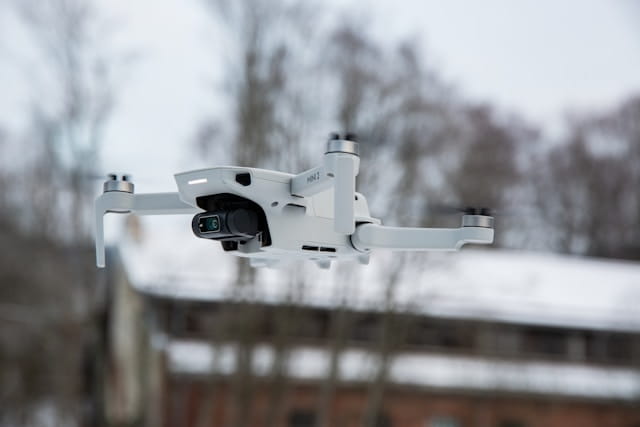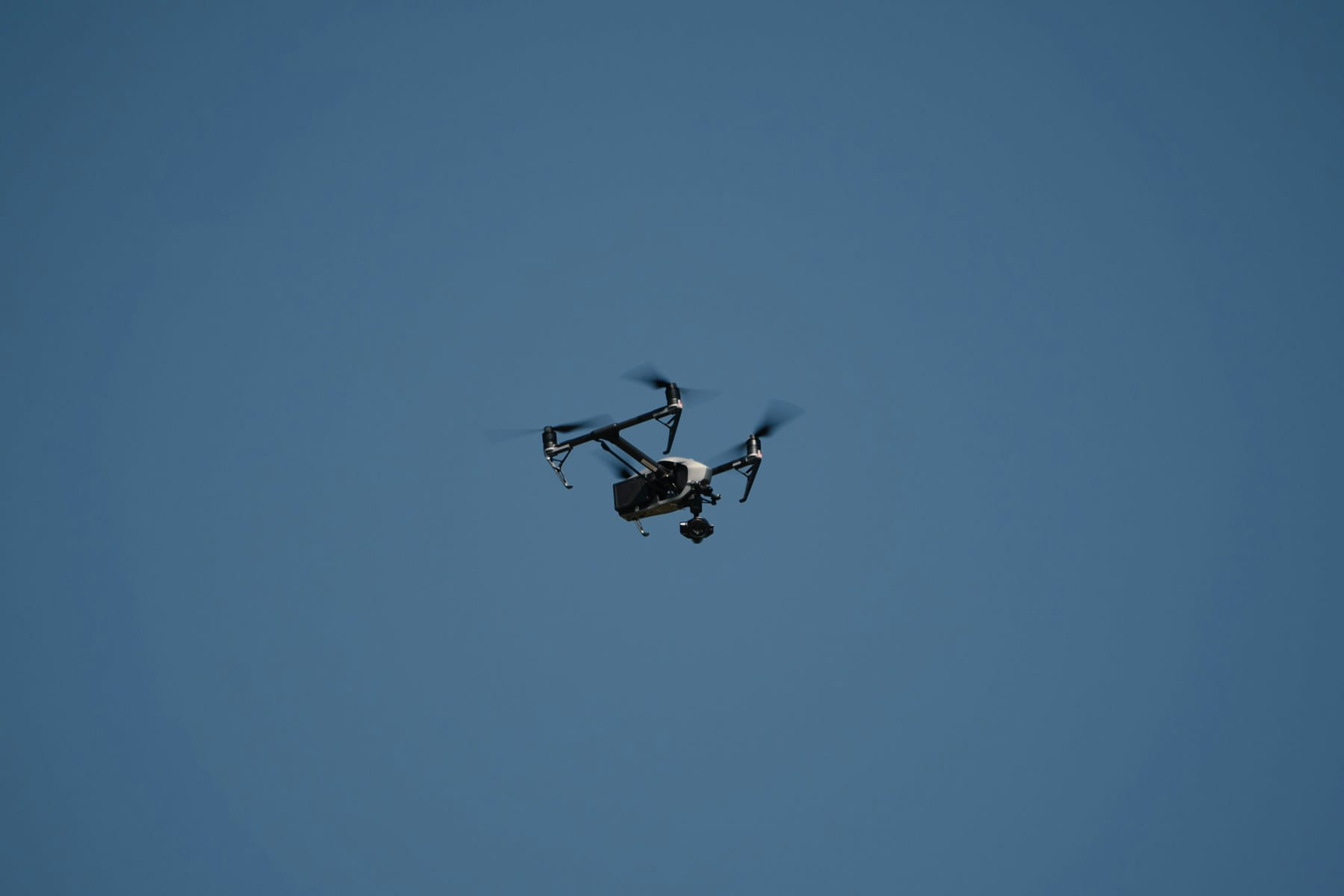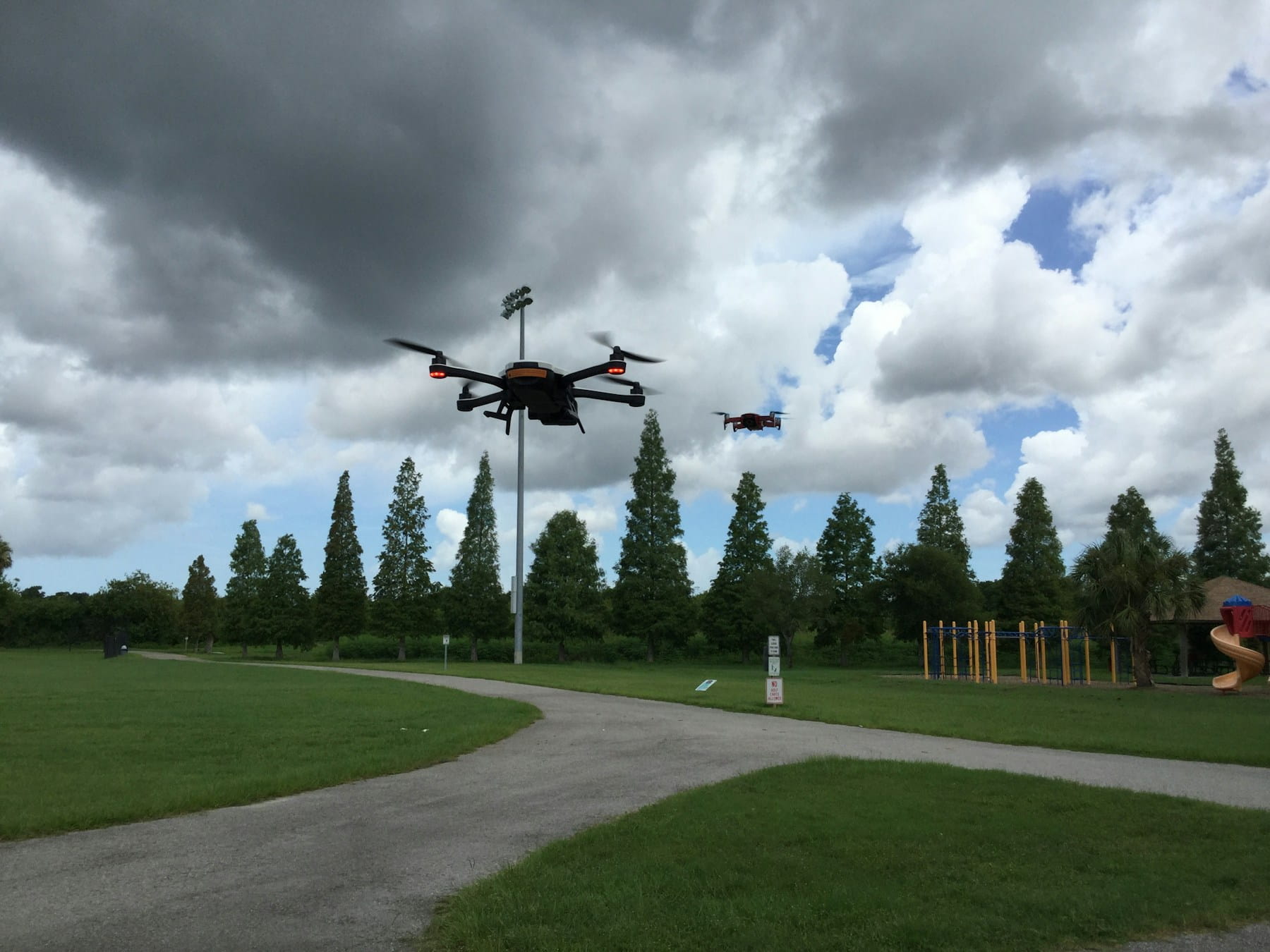Comprehensive drone flight reports are essential for regulatory compliance, operational efficiency, and performance analysis, transforming raw flight data into actionable insights for professional unmanned aircraft operations.
Modern drone operations depend on comprehensive documentation to maintain regulatory compliance, operational safety, and business continuity. Flight reports serve as the cornerstone of professional unmanned aircraft operations, providing detailed records that satisfy regulatory requirements while supporting operational analysis and fleet management decisions.
Professional drone operators face mounting pressure to maintain detailed flight documentation. Regulatory bodies worldwide require specific record-keeping standards, and commercial clients expect thorough reporting of mission outcomes. Flight reports bridge this gap by transforming raw flight data into actionable intelligence that serves multiple stakeholders across the operation lifecycle.
The complexity of drone operations has increased dramatically over the past decade. What once involved simple recreational flights now encompasses sophisticated commercial missions requiring precise documentation, regulatory compliance, and performance analysis. Flight reports have evolved from basic logbook entries into comprehensive documents that capture every aspect of unmanned aircraft operations.
Table of contents
- Understanding drone flight reports
- Types of flight reports
- Report components and data fields
- Regulatory compliance requirements
- Creating effective flight reports
- Automation and scheduling
- Data analysis and insights
- Template management
- Integration with operations management
- Best practices for flight reporting
- Common challenges and solutions
- Implementation considerations
Understanding drone flight reports
Flight reports represent structured documentation of unmanned aircraft operations, capturing operational data from individual missions or aggregated across multiple flights. These documents serve regulatory, operational, and analytical purposes within professional drone programs.
The foundation of effective flight reporting lies in systematic data collection. Every flight generates telemetry data, environmental conditions, crew information, and mission-specific metrics. Flight reports organize this information into coherent documents that support decision-making and regulatory compliance.
Modern flight reporting systems capture dozens of data points automatically. GPS coordinates, altitude profiles, battery consumption, weather conditions, and flight duration represent just a fraction of available metrics. The challenge lies not in data availability but in organizing this information meaningfully.
Flight reports differ significantly from simple flight logs. While logs record basic information like takeoff time and duration, reports provide comprehensive analysis of flight performance, safety metrics, and mission outcomes. This distinction becomes critical when dealing with regulatory inquiries or client deliverables.
The audience for flight reports varies considerably. Regulatory authorities focus on compliance aspects, while clients care about mission deliverables and performance metrics. Internal stakeholders need operational insights for fleet management and safety analysis. Effective reports address these diverse needs without overwhelming any single audience.
Types of flight reports
Professional drone operations generate various report types, each serving specific purposes within the operational framework. Understanding these distinctions helps operators choose appropriate reporting approaches for different scenarios.
Standard flight reports represent the most common documentation format. These comprehensive documents capture multiple flights within specified timeframes, typically organized by date, aircraft, or mission type. Standard reports work well for routine compliance reporting and general operational documentation.
Maintenance reports focus specifically on aircraft health and service requirements. These documents track flight hours, battery cycles, component wear, and maintenance activities. Maintenance reports support preventive maintenance programs and help operators optimize aircraft availability.
Regulatory-specific reports address particular compliance requirements. FAA COA (Certificate of Authorization) reports, for example, document operations under specific regulatory frameworks. These reports emphasize compliance metrics and operational parameters mandated by regulatory authorities.
Equipment reports provide detailed analysis of aircraft and payload performance across multiple missions. These documents track utilization rates, performance trends, and equipment-specific metrics that support procurement and deployment decisions.
Custom reports address unique operational requirements that standard formats cannot accommodate. Emergency response operations, specialized missions, or client-specific deliverables often require tailored reporting approaches that emphasize particular data sets or presentation formats.
The choice between report types depends on intended audience, regulatory requirements, and operational objectives. Many organizations maintain multiple report types to address different stakeholder needs without creating redundant documentation burdens.
Report components and data fields
Comprehensive flight reports include numerous data fields that capture operational details across multiple dimensions. The selection and organization of these fields determine report usefulness and stakeholder satisfaction.
Basic flight information forms the foundation of every report. Flight date, duration, takeoff and landing locations, weather conditions, and crew information provide context for all subsequent analysis. These fields answer fundamental questions about when, where, and under what conditions operations occurred.
Aircraft performance data reveals operational efficiency and safety metrics. Battery consumption patterns, altitude profiles, speed variations, and system health indicators help operators identify trends and optimize performance. This information proves particularly valuable for fleet management decisions.
Mission-specific metrics capture the unique aspects of individual operations. Survey area coverage, inspection points completed, delivery confirmations, or emergency response actions provide context that generic flight data cannot convey. These fields transform reports from documentation into operational intelligence.
Environmental conditions significantly impact drone operations and must be thoroughly documented. Wind speed and direction, visibility, temperature, precipitation, and atmospheric pressure affect flight performance and safety margins. Comprehensive environmental documentation supports both regulatory compliance and operational analysis.
Crew information and qualifications ensure proper documentation of human factors in drone operations. Pilot certifications, training currency, flight experience, and role assignments demonstrate compliance with regulatory requirements while supporting crew management decisions.
Incident and anomaly reporting captures deviations from normal operations. Equipment malfunctions, weather-related disruptions, airspace conflicts, or mission modifications require detailed documentation to support safety management systems and regulatory reporting requirements.
The following table illustrates common data fields and their reporting applications:
| Data Field Category | Examples | Primary Use |
|---|---|---|
| Flight basics | Date, time, duration, location | Regulatory compliance |
| Aircraft performance | Battery usage, altitude, speed | Fleet management |
| Mission specifics | Area covered, deliverables, outcomes | Client reporting |
| Environmental | Weather, wind, visibility | Safety analysis |
| Crew information | Pilot name, certification, experience | Compliance verification |
| Incidents | Malfunctions, disruptions, anomalies | Safety management |
Regulatory compliance requirements
Drone flight reports must satisfy various regulatory requirements that differ by jurisdiction, operation type, and aircraft classification. Understanding these requirements ensures compliance while avoiding unnecessary documentation burdens.
Federal Aviation Administration (FAA) requirements in the United States establish baseline documentation standards for commercial drone operations. Part 107 operations require flight logs that capture basic operational information, while more complex operations under Part 91 or specific authorizations demand comprehensive reporting.
European Union Aviation Safety Agency (EASA) regulations impose similar but distinct requirements under the Open, Specific, and Certified categories. Specific Operations Risk Assessment (SORA) procedures require detailed documentation of risk mitigation measures and operational performance.
International Civil Aviation Organization (ICAO) standards influence national regulations worldwide. These standards emphasize safety management systems, operational documentation, and performance monitoring that must be reflected in flight reporting systems.
Compliance requirements often extend beyond basic flight documentation. Environmental impact assessments, noise monitoring, privacy protection measures, and security protocols may require specific reporting elements depending on operational context.
Industry-specific regulations add another layer of complexity. Operations in controlled airspace, near airports, over populated areas, or in support of critical infrastructure face additional documentation requirements that must be integrated into flight reports.
The consequences of inadequate documentation can be severe. Regulatory enforcement actions, operational restrictions, insurance claim denials, and client contract violations all stem from insufficient flight reporting. Proactive compliance through comprehensive documentation protects operators from these risks.
Creating effective flight reports
The process of creating flight reports involves systematic data collection, organization, and presentation that serves multiple stakeholder needs. Effective reports balance comprehensiveness with readability while maintaining accuracy and timeliness.
Report creation begins during mission planning. Identifying required data fields, establishing collection procedures, and defining reporting timelines ensures smooth documentation workflows. Pre-flight preparation significantly reduces post-mission reporting burdens.
Data collection during flight operations requires careful attention to both automated systems and manual observations. Modern drone platforms capture extensive telemetry automatically, but human operators must document mission-specific information, environmental observations, and operational decisions that automated systems cannot capture.
Post-flight data processing transforms raw information into meaningful reports. This stage involves data validation, format standardization, and narrative development that explains operational context and outcomes. Quality control procedures ensure accuracy before report distribution.
Report customization addresses specific audience needs without creating multiple versions of the same information. Regulatory reports emphasize compliance metrics, while client reports focus on deliverables and performance. Template-based systems facilitate this customization while maintaining consistency.
The timing of report generation affects usefulness and compliance requirements. Regulatory authorities often mandate specific reporting timelines, while clients expect prompt delivery of mission outcomes. Automated systems can generate reports immediately after flight completion, supporting tight deadlines.
Review and approval processes ensure report accuracy and completeness before distribution. Multi-level review procedures catch errors and omissions while ensuring appropriate authorization for external distribution. These processes become particularly important for regulatory submissions.
Automation and scheduling
Automated flight reporting systems reduce manual workload while improving consistency and timeliness. Modern platforms can generate comprehensive reports automatically based on flight data and predefined templates.
Template-based automation allows operators to define report formats once and apply them to multiple flights or time periods. This approach ensures consistency while accommodating different reporting requirements for various stakeholders. Templates can include specific data fields, formatting standards, and distribution lists.
Scheduled report generation eliminates manual intervention for routine reporting requirements. Daily, weekly, or monthly reports can be generated automatically and distributed to appropriate recipients. This automation ensures compliance with regular reporting obligations while freeing staff for other activities.
Data integration capabilities allow reporting systems to pull information from multiple sources automatically. Flight management platforms, weather services, maintenance systems, and crew scheduling databases can contribute to comprehensive reports without manual data entry.
The following automated features enhance reporting efficiency:
- Automatic flight data extraction from telemetry logs
- Weather data integration from meteorological services
- Maintenance record correlation with flight activities
- Crew certification verification and currency tracking
- Regulatory compliance checking against current requirements
- Multi-format export capabilities for different stakeholders
- Distribution list management with role-based access controls
Quality assurance mechanisms within automated systems prevent common errors and omissions. Validation rules, completeness checks, and anomaly detection ensure report accuracy while flagging items that require human review.
Exception handling procedures address situations where automated systems cannot generate complete reports. Missing data, system failures, or unusual operational circumstances may require manual intervention to maintain reporting continuity.
Data analysis and insights
Flight reports serve as valuable data sources for operational analysis and continuous improvement initiatives. Systematic analysis of reporting data reveals trends, identifies optimization opportunities, and supports strategic decision-making.
Performance trend analysis examines operational metrics over time to identify patterns and anomalies. Battery consumption trends, flight duration variations, weather impact assessments, and equipment reliability statistics provide insights into operational efficiency and areas for improvement.
Comparative analysis between different aircraft, crews, or mission types reveals performance variations that may require attention. Identifying top performers and understanding their practices can improve overall operational standards through training and procedure refinement.
Cost analysis incorporates flight data with financial information to calculate operational costs per flight hour, mission type, or client engagement. This analysis supports pricing decisions, equipment procurement choices, and resource allocation strategies.
Safety analysis examines incident reports, near-miss events, and operational deviations to identify risk patterns and develop mitigation strategies. Trend analysis of safety metrics helps operators proactively address emerging risks before they result in incidents.
Client satisfaction metrics derived from mission outcomes and performance data support customer relationship management and service improvement initiatives. Understanding which operational factors correlate with client satisfaction helps operators focus improvement efforts effectively.
Regulatory compliance analysis tracks documentation completeness, reporting timeliness, and adherence to operational limitations. This analysis identifies compliance risks before they result in regulatory enforcement actions.
Template management
Report templates standardize documentation while accommodating diverse operational requirements. Effective template management systems balance consistency with flexibility to serve multiple stakeholder needs.
Template categories organize different report types for easy selection and application. Standard templates handle routine operations, while specialized templates address unique requirements for specific missions, clients, or regulatory authorities.
Template customization allows operators to modify standard formats for specific needs without creating entirely new structures. Field selection, formatting options, and distribution settings can be adjusted while maintaining core template integrity.
Version control ensures template consistency across organizations while accommodating updates and improvements. Change management procedures track template modifications and ensure all users access current versions.
The following template management practices enhance reporting efficiency:
- Centralized template libraries accessible to all authorized users
- Role-based template access controls preventing unauthorized modifications
- Template testing procedures ensuring functionality before deployment
- User training programs covering template selection and customization
- Regular template reviews to identify improvement opportunities
- Archive procedures for outdated templates while maintaining historical records
Template sharing capabilities allow organizations to leverage successful formats across multiple operations or locations. Best practice templates developed for specific operational types can be adapted for similar missions elsewhere.
Integration testing ensures templates work correctly with data sources and automated systems. Template updates must be validated against existing data structures and reporting workflows to prevent system failures.
Integration with operations management
Flight reporting systems achieve maximum effectiveness when integrated with broader operations management platforms. This integration eliminates data silos while providing comprehensive operational visibility.
Flight planning integration ensures mission parameters and objectives flow seamlessly into reporting systems. Pre-flight planning data becomes part of the operational record, supporting comprehensive mission documentation from planning through completion.
Maintenance system integration correlates aircraft service activities with flight operations. This connection enables comprehensive equipment lifecycle tracking while ensuring maintenance requirements are properly documented in flight reports.
Crew management system integration automatically populates pilot information, certification status, and training currency in flight reports. This automation ensures accuracy while reducing manual data entry requirements.
Client management integration connects mission outcomes with customer accounts, supporting invoice generation, performance tracking, and relationship management activities. Flight reports become part of comprehensive client service documentation.
Inventory management integration tracks equipment utilization, battery cycles, and component lifecycle information. This data supports procurement decisions while ensuring accurate reporting of equipment status and requirements.
Financial system integration enables comprehensive cost tracking and profitability analysis. Flight data combined with financial information supports accurate job costing and pricing decisions.
Flight data monitoring platforms provide comprehensive operations management that seamlessly integrates flight reporting with planning, crew management, and compliance tracking. Integrated approaches eliminate data silos while ensuring comprehensive operational documentation.
Best practices for flight reporting
Successful flight reporting programs incorporate proven practices that maximize efficiency while ensuring compliance and stakeholder satisfaction. These practices address technical, procedural, and organizational aspects of reporting systems.
Data quality management ensures accurate and complete information in all reports. Validation procedures, completeness checks, and accuracy verification prevent errors that could compromise regulatory compliance or stakeholder confidence.
Standardization across operations creates consistency that simplifies training, reduces errors, and facilitates analysis. Standard procedures, template formats, and data definitions ensure reports from different crews or locations maintain consistent quality and format.
Training programs ensure all personnel understand reporting requirements and procedures. Regular training updates address system changes, regulatory modifications, and best practice evolution. Competency verification ensures personnel can execute reporting requirements correctly.
The following best practices enhance reporting effectiveness:
- Establish clear data collection procedures for all flight phases
- Implement quality control checkpoints before report distribution
- Maintain backup procedures for system failures or data loss
- Document reporting procedures and keep them current
- Regularly audit reporting compliance and accuracy
- Gather stakeholder feedback on report usefulness and format
- Monitor regulatory changes affecting reporting requirements
- Maintain secure storage and access controls for sensitive data
Change management procedures address system updates, regulatory changes, and operational modifications that affect reporting requirements. Structured change processes ensure modifications are properly tested and implemented without disrupting operations.
Continuous improvement initiatives systematically enhance reporting effectiveness based on user feedback, operational changes, and regulatory evolution. Regular program reviews identify optimization opportunities and implementation strategies.
Common challenges and solutions
Flight reporting programs face various challenges that can compromise effectiveness if not properly addressed. Understanding these challenges and proven solutions helps operators maintain robust reporting capabilities.
Data integration challenges arise when flight information resides in multiple systems that don't communicate effectively. Solution approaches include middleware platforms, standardized data formats, and integrated operations management systems that eliminate data silos.
Compliance complexity increases as operations expand across jurisdictions or operational types. Regulatory requirements may conflict or overlap, creating confusion about appropriate reporting standards. Solution strategies involve regulatory expertise, automated compliance checking, and template systems that address specific requirements.
Resource constraints limit the time and personnel available for comprehensive reporting. Manual processes consume significant staff time while increasing error risks. Automation solutions, template systems, and integrated platforms reduce manual workload while improving accuracy.
Stakeholder communication challenges arise when different audiences need different information from the same operational data. Clients want mission outcomes, regulators need compliance verification, and internal teams require operational metrics. Multi-format reporting systems address diverse needs without creating multiple documentation efforts.
Technology reliability issues can disrupt reporting workflows and compromise compliance. System failures, data corruption, or connectivity problems require robust backup procedures and redundant systems. Cloud-based platforms with automatic backups provide reliable reporting infrastructure.
Staff turnover affects reporting consistency and institutional knowledge. New personnel require training while departing staff take system knowledge with them. Comprehensive documentation, standardized procedures, and user-friendly systems minimize turnover impacts.
Data security concerns require careful attention to sensitive information in flight reports. Client data, operational details, and regulatory information must be protected while remaining accessible to authorized users. Role-based access controls, encryption, and secure transmission protocols address security requirements.
The solutions to these challenges often involve comprehensive operations management platforms that integrate reporting with other operational activities. Integrated systems reduce complexity while improving data quality and reducing manual workload.
Implementation Considerations
Implementing comprehensive flight reporting systems transforms operational documentation from administrative burden into strategic asset. This process requires careful attention to regulatory requirements, data workflows, and stakeholder needs while maintaining operational efficiency.
Organizations implementing systematic flight reporting benefit from understanding compliance requirements, automated data collection methods, and integration opportunities with broader operations management platforms before scaling their documentation systems. Successful implementations typically start with clear reporting requirements, template standardization, and automated generation workflows.
Professional operators leverage integrated platforms to coordinate flight reporting with fleet management, maintenance tracking, and crew scheduling while ensuring consistent data quality and regulatory compliance across all operational documentation.
In Summary
Mastering drone flight reporting provides professional operators with the documentation foundation necessary for regulatory compliance, operational excellence, and continuous improvement. From basic flight data capture to comprehensive performance analysis, systematic reporting approaches transform raw telemetry into actionable intelligence that serves multiple stakeholder needs.
The complexity of modern reporting requirements demands attention to data accuracy, regulatory compliance, stakeholder communication, and operational efficiency. As drone operations mature and documentation expectations expand, operators who implement robust reporting systems position themselves for sustained operational success and regulatory confidence.
Organizations establishing comprehensive flight reporting programs today are building documentation frameworks that support evidence-based decision making, proactive risk management, and competitive differentiation. The integration of automated reporting with professional operations management creates operational advantages in efficiency, compliance, and service quality.
Ready to Streamline Your Flight Reporting?
Join professional operators who have simplified their documentation workflows through comprehensive platforms designed for commercial drone operations. Whether you're managing regulatory compliance, optimizing fleet performance, or delivering client reports, automated flight reporting enables operational excellence.
Start your free trial today — no credit card required.
Or book a demo to see how DroneBundle integrates flight data monitoring, compliance tracking, and automated reporting in a platform designed specifically for professional drone operations.




